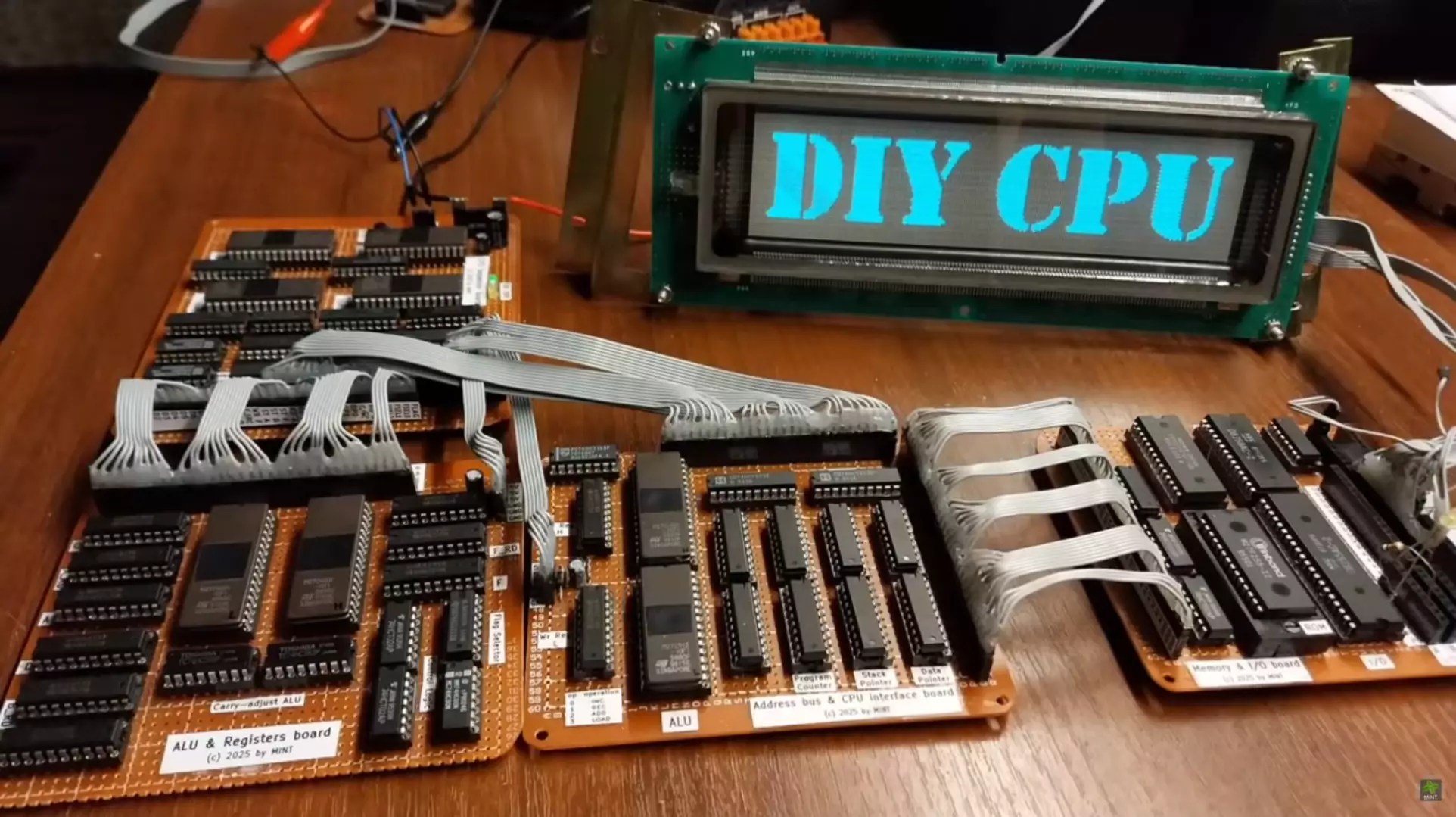In an era dominated by advanced semiconductor manufacturing and mass-produced processors, the idea of building a CPU from scratch might seem audacious or even impossible for the average hobbyist. Yet, a passionate individual has shattered this notion by taking on the seemingly insurmountable task of constructing a functioning microprocessor using ancient components. This project exemplifies the relentless spirit of innovation, reminding us that curiosity and perseverance can defy the conventional boundaries of technology. It’s not just about creating a gadget; it’s about gaining deep insight into the fundamental workings of computers, reconnecting with the roots of computing technology.
From Nostalgia to Technical Masterpiece
The project, led by Polish YouTuber MINT (Majsterkowanie i nie tylko), goes beyond mere nostalgia. It’s a testament to how far we’ve come in the evolution of microprocessors, from simple 8-bit chips like the Zilog Z80 to today’s multi-core, high-performance CPUs. MINT’s journey spans roughly three months, during which he meticulously sourced obsolete memory chips, studied their functionalities, and experimented with their capabilities. What initially started as a way to control small devices blossomed into a comprehensive endeavor to design an entire CPU, one that mimics early microprocessors yet is realized with modern ingenuity and patience.
This project illuminates a profound lesson: the essence of computing isn’t solely predicated on cutting-edge technology but also on understanding and manipulating the fundamental components beneath the surface. By repurposing old memory chips, MINT exemplifies how even the “discarded” can be transformed into something extraordinary. His demonstration of a working, self-made processor controlling a small display to run scenes from The Matrix underscores the feasibility—and the excitement—of building hardware with one’s own hands.
Technical Challenges and Intellectual Rewards
Constructing a CPU from scratch using vintage components is an enormous challenge. It requires mastery of soldering delicate circuitry, a deep understanding of logic gates, and patience required to troubleshoot issues that inevitably arise during such complex assembly. The fact that MINT not only built the hardware but also wrote the operating code himself emphasizes the level of dedication involved. Writing the firmware, debugging, and ensuring the sequential execution of instructions reflect a commitment that is often lost in modern high-level programming abstractions.
What makes this venture compelling isn’t just the technical achievement but the philosophical stimulation it provides. It encourages a hands-on understanding of how computers interpret instructions, process data, and produce output. The project acts as a living demonstration that, despite technological leaps, the core principles of digital logic remain accessible and teachable. Anyone with enough patience and curiosity can, in principle, recreate such a project to understand the fundamental workings of a processor.
Reflecting on the Significance of DIY Computing
This project raises an important point about technological accessibility and the democratization of knowledge. Today’s tech industry often feels distant, complicated by proprietary chips and complex manufacturing processes. MINT’s creation bridges this gap—by building a CPU with retro parts, he reminds us that the foundation of modern computing is rooted in simple, understandable logic.
Furthermore, this endeavor serves as a critique of our over-reliance on pre-made solutions. In a world where nearly every device is encapsulated in obfuscating shells of circuitry, projects like this call for a return to hands-on experimentation, a rekindling of DIY spirit. It’s a call to educators and hobbyists alike: understanding the hardware behind the software is invaluable for cultivating deeper insights and inspiring future innovations.
In the end, MINT’s project isn’t merely a demonstration of technical skill; it is a celebration of curiosity and perseverance. It challenges us to look back at the humble beginnings of personal computing—and to realize that with ingenuity and dedication, we can reimagine what’s possible, even today, in a world fixated on rapid technological advancement.


Leave a Reply